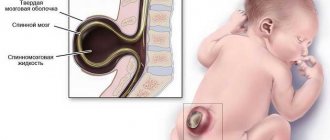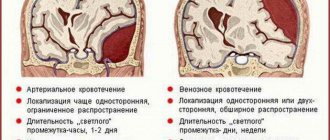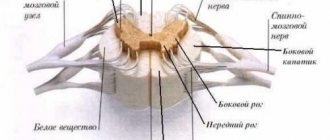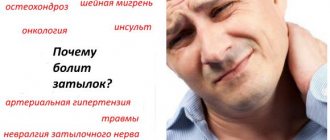Shingles or herpes zoster occurs because the chickenpox virus is once activated. After recovery, it remains in the human body forever, and with a decrease in immunity, the skin will begin to suffer again, and the nerve endings will be affected.
Trigeminal herpes is a complication of trigeminal ganglionitis. It is difficult for people with this disease to live. Doing household chores is difficult, numerous problems arise, fatigue and stress are constantly present.
Area affected by the virus
Clinical picture
The main symptom of the disease is the presence of severe pain in the place where herpes was previously localized. Its character can be different: pulsating, sharp, aching, burning, shooting, etc.
The sensitivity of the area where shingles used to be may be increased or decreased. Moreover, if it is reduced, slight numbness may bother you. In addition, allodynia can develop - this is a feeling of pain from something that normally should not cause it.
For example:
- combing;
- putting things on;
- being in a draft;
- touching your body and so on.
There is discomfort from scratching
The first few days, when the disease just begins to develop, the following symptoms may be present:
- feeling of malaise and weakness throughout the body;
- pain in the facial area;
- feeling of a strong headache, its pulsating nature;
- feeling of aching throughout the body;
- a slight increase in body temperature is possible.
Many patients, after the appearance of such symptoms, believe that they are developing some kind of viral disease. For the purpose of treatment, they begin to take antiviral drugs, as well as antipyretics.
After a few days, a burning sensation begins to be present in the area of the ternary nerve, and other symptoms appear, namely:
- rashes on the mucous membranes;
- rash in the area of the ternary nerve;
- severe headaches;
- one half of the face swells slightly;
- There is a burning sensation behind the ears and in the temple area.
The rashes appear within a few weeks, after which they dry out and begin to crust over. Subsequently, they will disappear, and nothing will remain in their place.
Location of the virus
Important! You should not be near a person who has herpes zoster; the rash is dangerous. A virus that enters the eyes can cause encephalitis.
The video in this article explains in more detail how the disease develops.
Reasons for the development of the disease
It is generally accepted that herpes of the ternary nerve develops due to the inflammatory process in the peripheral nerve and nerve endings. It is inflammation that causes the virus to become activated and begin to spread.
Interesting! Due to the inflammatory process, an imbalance occurs between the analgesic and pain mechanisms, and they also stop interacting. Subsequently, control over neuronal excitability is impaired.
Postherpetic neuralgia does not always develop after herpes. This can only happen due to provoking factors, namely:
- Advanced age . People aged 30 to 50 years old experience the disease in 10% of cases. Patients over 60 years of age are several times more likely to suffer from the disease. Persons over 75% of age suffer from the disease in 70% of cases. Experts believe that in young people, the body can more quickly cope with inflammation and eliminate its consequences. In older people, immunity decreases, which is why they get sick more often.
- Foci of prevalence of rashes. Neuralgia of this type is most often localized on the torso.
- What is the affected area? The risk of further development of the disease largely depends on the area of the rash. This may be due to the fact that the body's defenses are weakened.
- How severe is the pain ? The more painful it is at the stage of appearance of the rash, the higher the likelihood that neuralgia will begin to develop.
- At what time did the disease begin ? If the patient starts taking antiherpetic drugs late, the virus can lead to the development of complications.
It largely depends on the area of damage
It is worth noting that symptoms of postherpetic neuralgia will appear only on the third or fourth day after the virus begins to activate and spread.
Why does shingles cause pain?
The main causes of pain with herpes zoster are a rash and a large area of skin damage. As the disease develops, the proper functioning of nerve cells is disrupted, and as the virus actively multiplies, the nerve endings become too sensitive.
How pain manifests itself
Most patients compare the pain symptom to the passage of current through the body. Burning and boring sensations bring a lot of suffering to the patient. For some, the pain manifests itself in the form of shooting, twitching or stabbing sensations. The symptom may be accompanied by itching or numbness.
In the active phase of the rash, the pain worsens at night. The greatest discomfort is felt in an uncomfortable climate (cold or hot).
Localization of pain
The pain will be concentrated where the rash is. This could be the back, stomach, face, chest. This suggests that these areas of the skin contain damaged nerve endings. Most often, patients complain of pain in the lumbar region or the entire back.
Treatment methods
If trigeminal herpes develops, treatment is carried out with the use of medications.
Several types of drugs are recommended:
- Amitriptyline. This is a tricyclic antidepressant that can quickly relieve neuropathic pain. It has a direct effect on those substances that are located in the brain and spinal cord, they are the ones that respond to pain and reduce sensitivity. It is recommended to take the medicine in small dosages; depending on the results and the presence of side effects, you can gradually increase it. Symptoms will disappear and relief will come only after the required dosage is selected.
- Pregabalin. It is an anticonvulsant and is used for epilepsy. Due to the fact that the product muffles nerve impulses, it is possible to quickly relieve neuropathic pain.
Drug used for treatment
Both drugs are available in the form of tablets and syrups.
Interesting! This treatment does not always completely relieve pain.
Instructions for use must be strictly followed.
If treatment does not bring the desired result, doctors may prescribe other drugs:
- Tramadol. The drug belongs to the group of opioids, with its help you can quickly relieve neuropathic pain. The drug is fraught with the fact that over time it can become addictive. It is possible to get rid of pain, and patients do not encounter side effects. In addition, you can combine the medicine with other drugs.
- Lidocaine patch. Allows you to relieve pain in the area where it is glued. Before use, you should read the instructions.
Prescribed for treatment strictly by the attending physician
To relieve pain caused by neuralgia, opioid medications, such as Morphine, can be used. You must first undergo an examination by a neurologist; taking into account the prevalence of the virus and the level of pain, the doctor will select the necessary dosage.
Traditional methods of treatment
Pain may remain even after the rash on the body has passed, but small traces remain. In this case, you can try to get rid of the unpleasant sensations with your own hands. Consult your doctor first and take into account contraindications.
The most popular treatment methods:
- Geranium leaves. Apply the leaf to the source of pain and secure it with something on top. After two hours, remove the leaf.
- Garlic oil. The recipe is simple: dilute half a liter of vodka with a tablespoon of oil. Directions for use: Rub the resulting product into the area of pain three times a day.
- Club moss. Pour boiled water over a spoonful of crushed and dry raw materials and let it brew for half an hour. Drink a tablespoon three times a day.
- Willow bark. Recipe: pour ten grams of crushed bark with water and put on fire. Once everything comes to a boil, remove from heat and let cool. Just like in the previous case, drink a tablespoon three times a day.
- A decoction of pine branches and cones. Place young pine branches in a saucepan, add water, and boil over low heat for half an hour. Cover with a lid and let sit for six hours. Every time you are going to take a bath, add the product.
Important! During the acute stage of the disease, it is not recommended to use traditional methods. This may cause the infection to penetrate into the nerve, and the area affected by herpes will be enlarged.
The photo below is an example of what folk methods can be used for treatment.
Willow bark is a good remedy for treatment
Other treatment methods
You can get rid of pain, stress, and anxiety using traditional methods in combination with alternative ones.
Auxiliary therapies:
- massage – it can be used to relieve pain, it should be performed by a professional;
- meditation or other methods of relaxation - help relieve stress and tension;
- acupuncture – the procedure relieves pain;
- analgesics;
- immunoglobulins - given intramuscularly;
- antiviral agents;
- taking vitamins – necessary to strengthen the immune system and increase the body’s defenses;
- ointment containing acyclovir.
In a protracted form of the disease, when there is a risk of a chronic form, hormonal therapy may be added. Potassium supplementation is prescribed along with corticosteroids. X-ray therapy is extremely rarely used.
Acupuncture is used to relieve pain
The effectiveness of all the methods listed above has not been proven. You can relax and relieve tension by simply listening to relaxing music and taking a warm bath.
Preventive measures
- vaccination;
- increasing immunity.
Vaccination
against the Varicella-zoster virus was approved in 2006 after a successful study involving about forty thousand people whose age was sixty years and above. The study results showed that the introduction of the vaccine reduced the incidence of herpes zoster by 51%.
The purpose of this vaccine is to ensure the creation of artificial active immunity against the Varicella-zoster virus. This vaccine contains live cultures, but with reduced virulence (
Currently, there is only one preventive vaccine against shingles - the Zostavax vaccine. This vaccine is administered once, intradermally. The average duration of action of a prophylactic drug is three to five years.
- to prevent relapses in people already suffering from herpes zoster;
- adults who have not had chickenpox;
- people suffering from postherpetic neuralgia.
If treatment is started in a timely manner and all instructions and recommendations of the doctor are followed, herpes zoster does not cause complications. The main thing is that at the first suspicion or when characteristic symptoms appear, immediately consult a doctor and get a diagnosis.
However, rather than undergo treatment and take a bunch of pills, it is better to prevent the development of herpes in advance. There are two main ways to do this: vaccination and immune stimulation.
Vaccination
Today there is only one vaccine against this type of herpes. It was created on the basis of an artificially grown Varicella-zoster virus. The solution, called Zostavax, is administered subcutaneously once. The duration of the therapeutic effect varies from three to five years. However, not everyone can get the injection. The vaccine is contraindicated for:
- pregnancy;
- diseases HIV or AIDS;
- presence of allergies to components;
- colds.
Herpes of the ternary nerve, what should not be done?
After the examination has been completed and the course of treatment has begun, many patients continue to make mistakes, thereby aggravating their condition.
That is why you need to know what to do under no circumstances:
- herpes papules should not be cauterized or squeezed out, as this will lead to further spread of the infection;
- do not touch your face with dirty hands;
- do not heat the reddened areas; you should also not apply anything cold;
- Any nerve stimulants are prohibited during the treatment period: alcohol, caffeine, nicotine, etc.
Don't touch your face with dirty hands
Considering all these rules, you can cope with the infection faster; there will be no marks left on the skin or in the nerve plexuses.
Symptoms
Herpetic neuralgia is manifested by the following symptoms:
- strong burning sensation;
- skin itching;
- paresthesia - numbness of a skin area;
- increased sensitivity to touch or temperature changes;
- strong pain.
Pain sensations are localized in places where the rashes were concentrated. Pain is conventionally divided into 3 types:
- constant dull oppressive deep-seated nature;
- periodically occurring shooting;
- sudden (allodynic), occurring as an inadequate response to the slightest touch (for example, rubbing against clothing).
Herpetic neuralgia is manifested by itchy skin.
Over time, these manifestations are joined by:
- General infectious signs are fever, increased fatigue, swollen lymph nodes.
- Neurological disorders - headache, insomnia, depression, apathy, increased anxiety and irritability.
Prevention
People who once had chickenpox can experience herpes again. To prevent the disease from progressing, special attention should be paid to prevention.
You can prevent the virus from entering the nervous system as follows:
- harden your body, teach your children to do the same from childhood;
- nutrition should be balanced and rational, in this way the metabolic process can be regulated;
- spend a lot of time outdoors;
- do not spend a lot of time in the cold;
- control the level of physical activity.
If herpes or so-called colds constantly appear in the mouth area, it is recommended to take antiviral drugs in the fall and spring. People over 60 years of age are vaccinated to strengthen the immune system, thus avoiding the activation of the virus.
Trigeminal nerve and herpes are something that should never come together. Remember that infection can cause dire consequences. Immediately after you see suspicious symptoms, contact a medical facility.
At-risk groups
Neuralgia does not develop in every case of infection with cutaneous herpes. Factors that provoke the appearance of neuralgic pain are:
- older age of patients;
- decreased immune defense of the body;
- localization of rashes.
With age, immunity to the virus in people who have had chickenpox weakens. This explains the fact that postherpetic neuralgia in the vast majority of cases is observed in people over 65 years of age.
The fundamental factor is immunity. Immunodeficiency provokes pain.
Frequently asked questions to the doctor
Herpes and its reproduction
Tell me, how does the herpes virus multiply?
The virus multiplies in the nucleus of the cell into which it has penetrated. All its structural components are used as building materials. In addition, the production of substances that promote the construction of new viruses begins. After infection, the virus will remain in the human body forever, but many may not even know about it.
Herpes prognosis
What is the prognosis for recovery if I have herpes simplex?
Symptoms of the disease on the genitals disappear within ten days. In people with weakened immune systems, symptoms may be more pronounced. The infection may manifest itself repeatedly from time to time, each time contributing to the appearance of symptoms.
Even frequent and prolonged exposure to the sun, stress, ARVI, flu and other diseases can cause a relapse. By leading a healthy lifestyle, you can protect yourself from the disease and never experience its symptoms.
Useful video
Neuropathic pain that persists for a long period after an episode of herpetic infection with localization of rashes on the torso, head or limbs of a person negatively affects his general condition. With a favorable course, neuralgia caused by herpes zoster goes away on its own. Patients with severe pain that does not go away for a long time after the skin heals need specific therapy.












